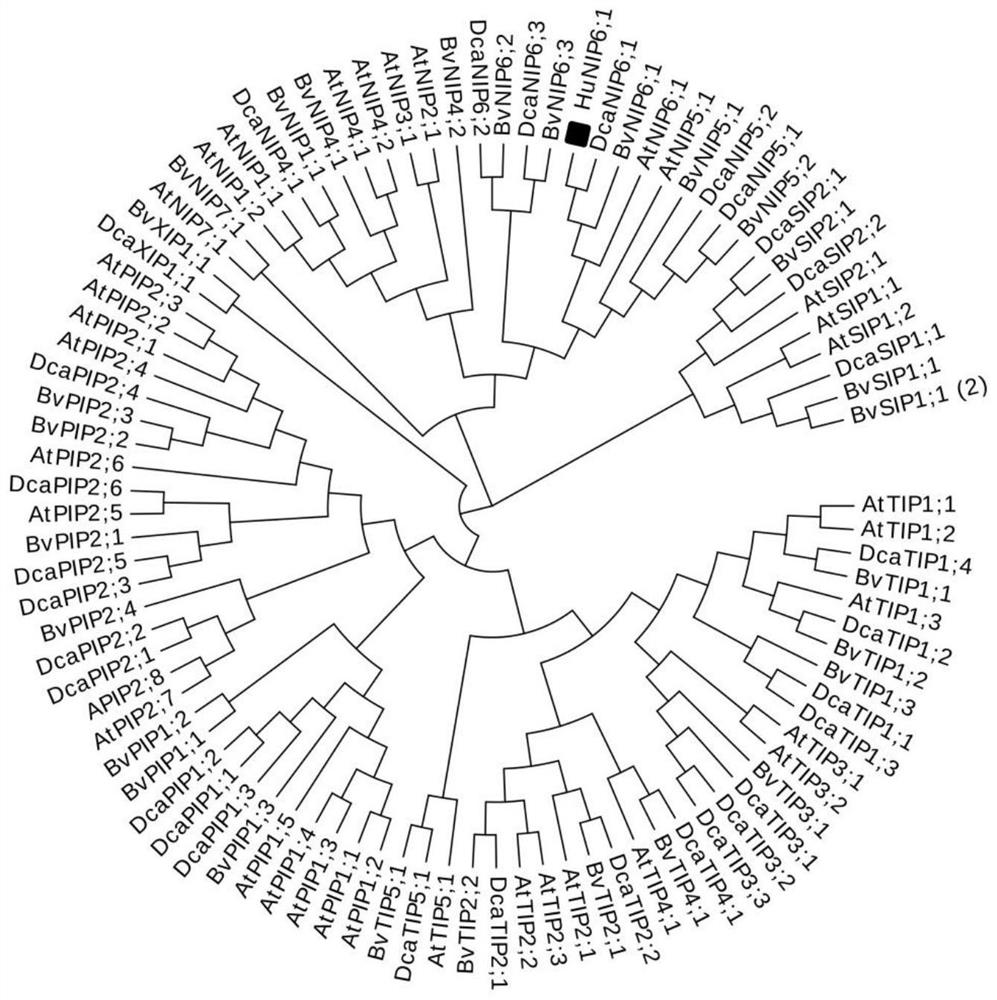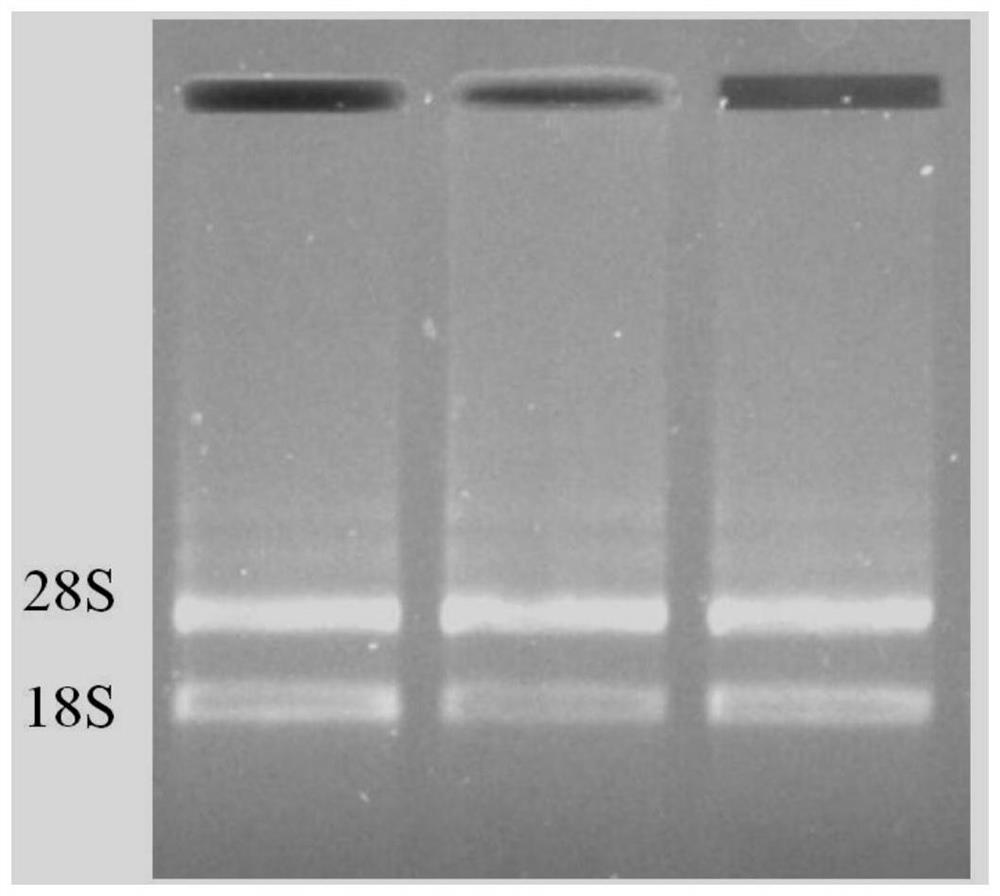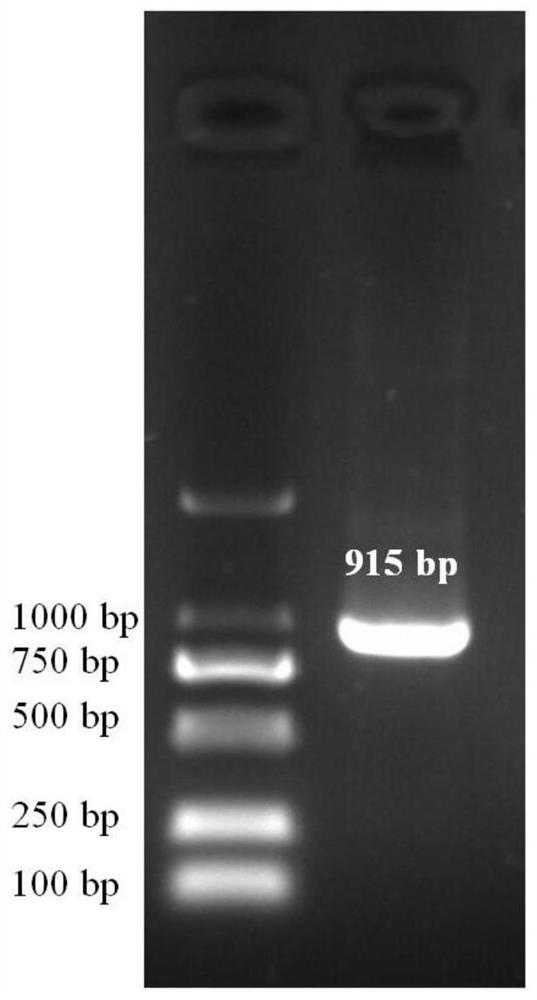Pitaya HuNIP6;1 gene for promoting precocious flowering of plants and application thereof
A technology of early flowering and dragon fruit, applied in plant genetic improvement, angiosperms/flowering plants, applications, etc.
- Summary
- Abstract
- Description
- Claims
- Application Information
AI Technical Summary
Problems solved by technology
Method used
Image
Examples
Embodiment 1
[0053] Screening and cloning of embodiment 1 dragon fruit nocturnal flowering-related genes
[0054] 1. Screening and cluster analysis of dragon fruit nocturnal flowering related genes
[0055]A total of 44 gene sequences were searched using the keyword "Aquaporin" in the dragon fruit genome database. After excluding incomplete MIP domains or incomplete NPA motifs, a structurally complete gene sequence related to the night flowering of dragon fruit was finally screened out. Related gene HuNIP6;1. Use TAIR (https: / / www.arabidopsis.org / ) and NCBI database (https: / / www.ncbi.nlm.nih.gov) to download the full-length amino acid sequence of the Aquaporin gene used to construct the phylogenetic tree, using the maximum likelihood However, the Bootstrap value (set value) of the phylogenetic tree constructed by the MEGAX software is 1000 times, and the result of the phylogenetic tree is as follows figure 1 shown.
[0056] 2. Sequence analysis of HuNIP6;1 gene and physicochemical prope...
Embodiment 2
[0072] Example 2 Analysis of subcellular localization of HuNIP6; 1 gene
[0073] 1. Construction of the carrier
[0074] The carrier of the subcellular localization experiment was pC18-GFP vector, and HindⅢ and BamH I were selected as recombination sites, and primers with vector homology arms (sequences shown in SEQ ID NO.5-6) were designed with Primer Premier 5.0 software. Amplify the full-length cDNA sequence of HuNIP6; 1 gene (not including the stop codon), refer to Instructions for use of HD Cloning kit (TaKaRa, Japan) The amplified product was connected to the pC18-GFP vector, and the PCR recombinant plasmid was transformed into Escherichia coli Transl-T1 competent cells. The method was the same as in Example 1, and the antibiotic was Kan. Use primers with vector homology arms (primer sequences shown in SEQ ID NO.5 and 6) to carry out bacterial liquid PCR detection and sequencing, and sequence the positive strains detected by PCR to obtain pC18-HuNIP6; 1 subcell...
Embodiment 3
[0085] Example 3 HuNIP6; Functional verification of the 1 gene
[0086] 1. Construction of vectors, recombinant plasmids and transformation of Agrobacterium tumefaciens
[0087]The HuNIP6;1 gene was constructed on the expression vector pPZP6k90 driven by 35S, the antibiotic was Kan, the recombination restriction site was Xba I, and the primers whose sequences were shown in SEQ ID NO.7-8 were designed. Then transfer the connected vector plasmid into Agrobacterium GV3101, and save it for future use after being detected as a positive bacterial liquid by PCR. The specific operation is the same as in Example 2. The primer sequences are as follows:
[0088] SEQ ID NO.7:
[0089] CATTCTACAACTACATCTAGAATGGATGCTGAGGATCCCGG;
[0090] SEQ ID NO.8:
[0091] AGCTTGCATGCCAATTCTAGATCATCTCCGGAAGCTTGGTG.
[0092] 2. Transformation of Arabidopsis thaliana mediated by Agrobacterium tumefaciens
[0093] (1) Add 1 mL of the above bacterial solution to 200 mL of YEP medium (containing 100 μg ...
PUM
 Login to View More
Login to View More Abstract
Description
Claims
Application Information
 Login to View More
Login to View More - R&D
- Intellectual Property
- Life Sciences
- Materials
- Tech Scout
- Unparalleled Data Quality
- Higher Quality Content
- 60% Fewer Hallucinations
Browse by: Latest US Patents, China's latest patents, Technical Efficacy Thesaurus, Application Domain, Technology Topic, Popular Technical Reports.
© 2025 PatSnap. All rights reserved.Legal|Privacy policy|Modern Slavery Act Transparency Statement|Sitemap|About US| Contact US: help@patsnap.com



